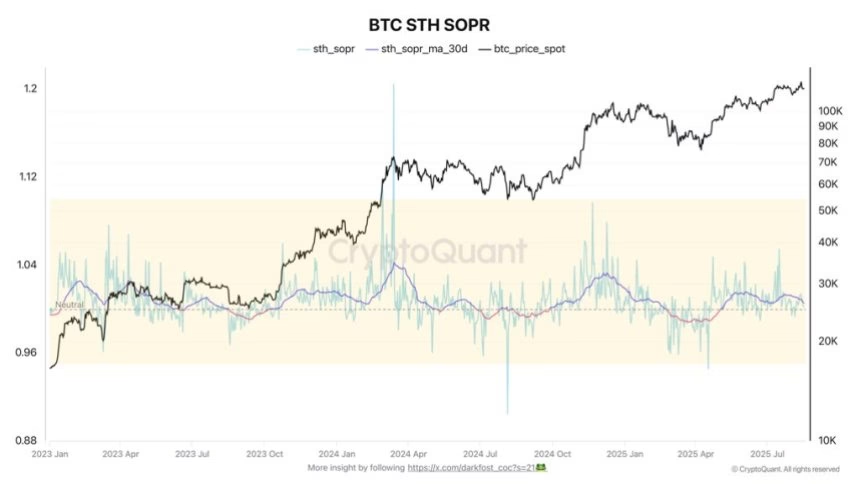Bitcoin is trading around the $115,000 level after a sharp pullback from its recent all-time high near $124,000. Volatility has returned to the market, sparking renewed debate among analysts and investors over whether BTC is preparing for a deeper correction or gearing up for the next leg higher. The current price action reflects indecision, with buyers and sellers locked in a tight battle at these critical levels.
Related Reading
Some analysts warn that Bitcoin could face stronger selling pressure if it fails to reclaim momentum, while others argue that this retrace is a healthy reset before another aggressive move upward. What is clear, however, is that investors are preparing for heightened market swings in the coming weeks.
Key on-chain data reveals that short-term holders (STHs) remain under pressure. Since November and December of 2024, the average profit realized by this group has not exceeded 5%. This means their Spent Output Profit Ratio (SOPR) has stayed below 1.05, signaling that many recent market entrants have struggled to lock in meaningful gains. Historically, this kind of stagnation in STH profitability has preceded major directional moves, suggesting that Bitcoin may be on the verge of its next decisive phase.
Bitcoin Short-Term Holders Under Pressure
Top analyst Darkfost has provided a fresh take on Bitcoin’s current market structure, focusing on the behavior of short-term holders (STHs) through the lens of the Spent Output Profit Ratio (SOPR). The SOPR measures the average profit or loss realized when a UTxO is spent, making it one of the most reliable gauges of investor profitability and selling behavior.
At present, the STH SOPR remains stuck at the neutral ratio of 1. This means that, on average, recent market entrants are breaking even on the coins they sell, rather than realizing a profit or a loss. According to Darkfost, this suggests that many STHs entered the market late, likely during Bitcoin’s push above $100,000 over the past six months. As a result, they now find themselves in a holding pattern, waiting for price appreciation to secure meaningful returns.
Darkfost emphasizes that in bull markets, these dynamics often follow a predictable pattern. When STHs are shaken out, their SOPR typically dips below 1, reflecting selling at a loss. Historically, such phases have created attractive dollar-cost averaging (DCA) opportunities, as capitulation from weaker hands clears the way for…
Click Here to Read the Full Original Article at NewsBTC…
























